Super Macro Underwater Photography - The Definitive Guide, Part 4
Part 4 – Techniques: Focus
by Keri Wilk
What Affects Focus?
Achieving sharp focus shooting super macro is often a challenge underwater. For any given f-stop, depth of field is a function only of the magnification ratio of the image being produced. More magnification means less depth of field. Since super macro photography involves high degrees of magnification, it follows that the depth of field will be very small. How and where the narrow field of focus is positioned depends on your choice of focusing method.
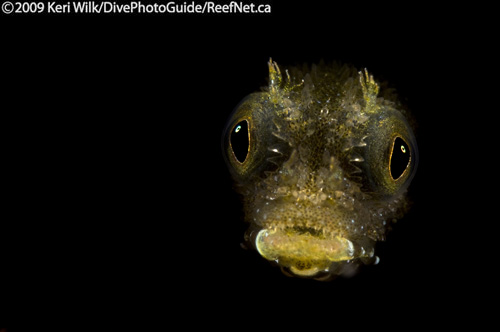
Focus Methods
(a) Auto
It is tempting to simply ‘point and shoot’, trusting that the camera’s autofocus will select the correct portion of the subject to be in focus, but with super macro this can be a dangerous move – if the camera selects a plane of focus that is a fraction of a millimeter this from your intended focal plane, the shot can be changed from treasure to trash. I do not recommend this method of focusing.
(b) Auto with AF lock
Once the image is properly framed and roughly focused, the focal plane can be locked in place by half-depressing the shutter release, pressing and holding the “AF-L” button (on Nikon bodies), or by switching the camera body into manual focus mode. Using any of these methods, the camera can be rocked back and forth as necessary, to precisely place the plane of focus where you desire.
(c) Manual
Having access to the primary lens’ manual focus ring can be very helpful when trying to position the plane of focus. This is the most effective method, since your fingers are kept free from holding down any buttons, and minor changes in magnification and framing can be made with the turn of the focus ring. However, not every brand of port has a built-in manual focus knob, so your particular rig may not be capable of this focusing technique. Additionally, manual focusing for super macro requires good eye sight, sometimes the reason photographers tend to shoot in auto focus.

Focus Bracketing
Another helpful technique is “focus bracketing”. Once your image is properly composed, take several exposures while very slightly rocking the camera body back and forth. This will usually increase your chances of positioning the plane of focus precisely where you want it. You can further increase your chances by decreasing the size of the aperture (increasing the f-stop number) to get more depth of field. But this should be done sparingly since reductions in aperture size are inevitably accompanied by some degree of image softening from diffraction effects. This can produce more harm than good.
General Shooting Tips
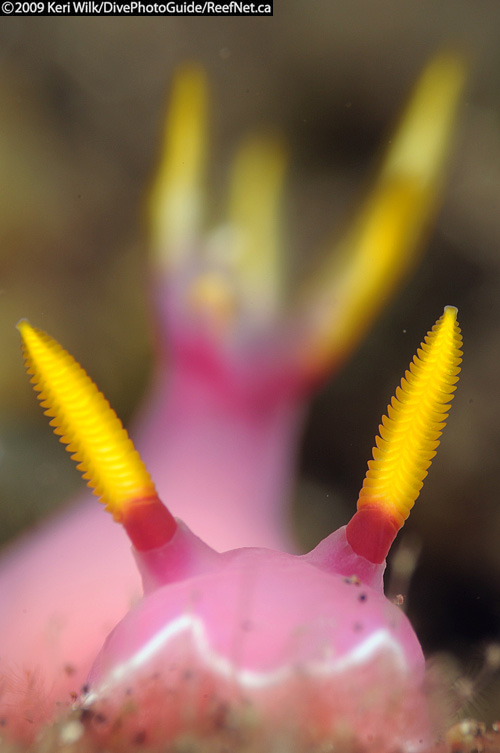
Subject choice
You might be tempted to seek out primarily microscopic animals to photograph, but shooting abstracts and detail shots of typical “normal-size” subjects can be rewarding and revealing. Keep the composition simple – try to limit the frame to a single subject, and minimize distracting objects in the foreground and background. Slow moving or static subjects are well suited for this type of photography, since tracking objects at high levels of magnification can be difficult. Also, since lens-to-subject distances are often very small, approachable subjects are preferable over skittish ones. Otherwise, be prepared to spend the majority of your dives trying to make friends with your subject.
Finding the Subject in the Viewfinder
While you might be able to easily see some subjects with your naked eye, locating them through the viewfinder is a task that is sometimes easier said than done. I find it useful to take a moment to mentally map the area surrounding the subject, taking note of the positions of nearby brightly colored objects or other distinguishable points in relation to the subject. So, when you pull the camera to your eye and the subject isn’t in the frame, you’ll be able to use the directions from your mental map to find it. With a little practice, this technique will become second nature.
The KISS Method for Composing (“Keep It Simple, Stupid”)
In macro and super macro photography, less is usually more. Try framing your shots such that there are as few distracting elements as possible. You want the viewer to be drawn to one or two main elements in the image, allowing them to fully appreciate the microscopic world that you’re sharing with them.

Breathing / Buoyancy
Keeping super macro subjects framed properly takes more than just a keen photographic eye – you’ll need solid control over your buoyancy, a steady set of hands, and a slow, calm breathing cycle. Coordinating your exposures with the pauses in your breathing cycle will usually give you the best shooting opportunities.
RELATED CONTENT
Featured Photographer
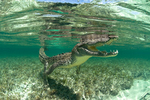

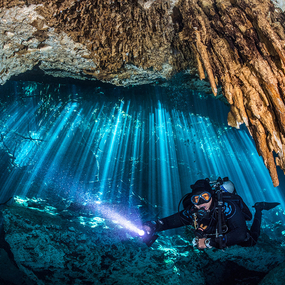


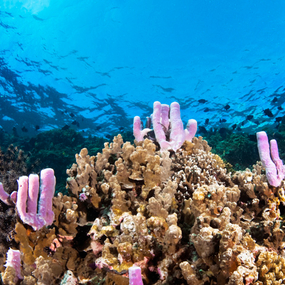
 Antarctica
Antarctica




